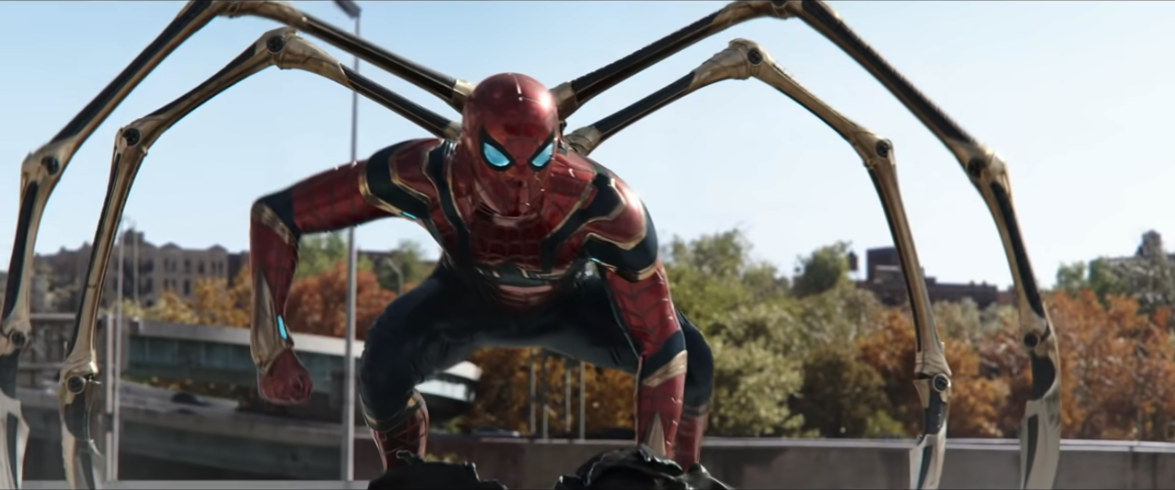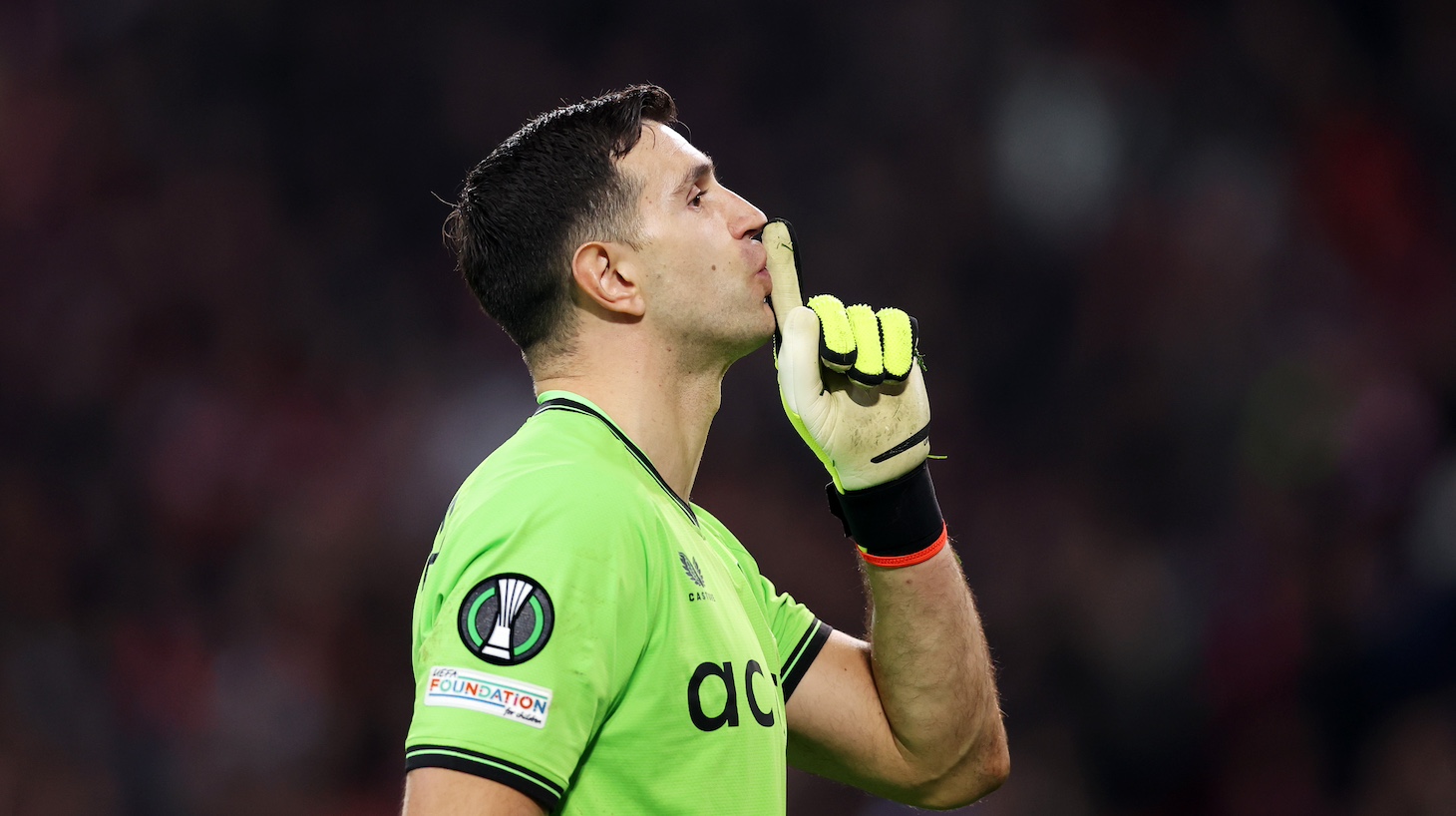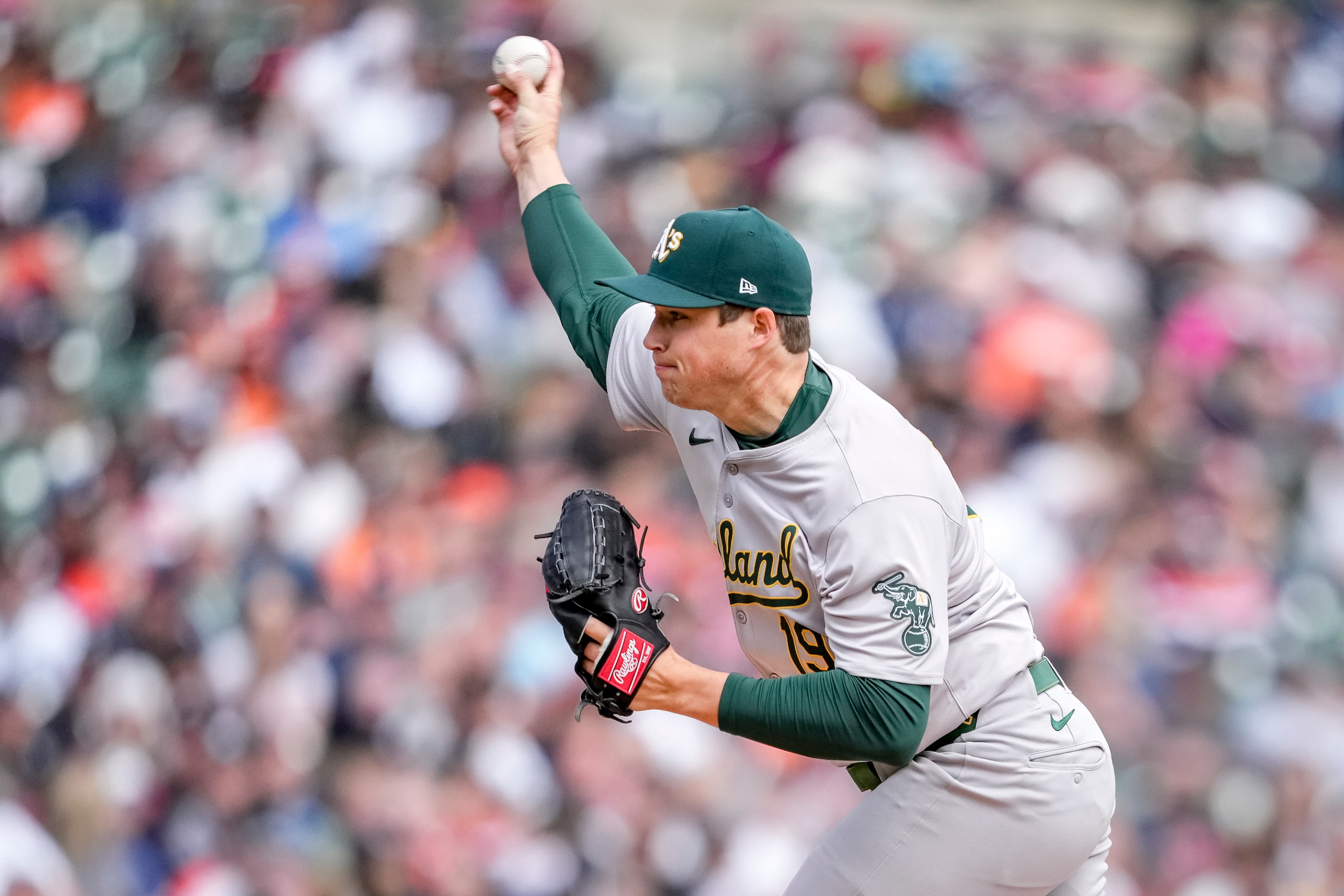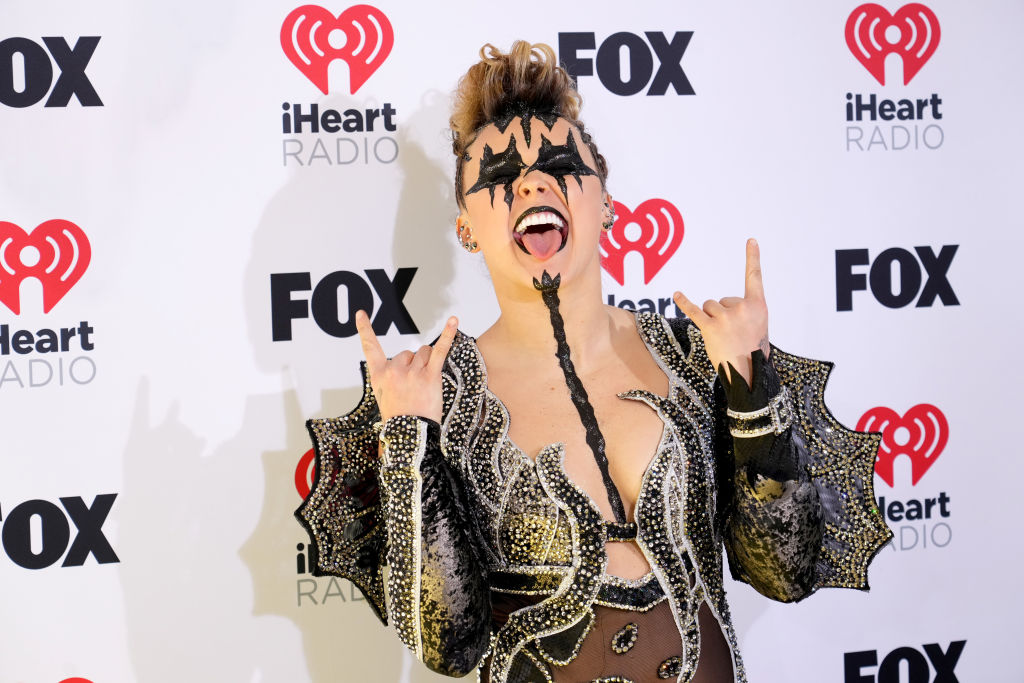Bad Special Effects Are A Choice
3:58 PM EDT on May 10, 2022

I wanna show you something terrible. This is the ending of the fourth episode of Moon Knight, Marvel’s foray into a more mature offering of its standard superhero product. Consider this fair spoiler warning. The title character, as played by Oscar Isaac, may not in fact be a superhero at all. He may just be the figment of one very unwell man’s imagination. Now, you could say that last sentence applies to all comic book characters but, in this case, it is the story of Moon Knight, and what makes it deeply compelling. There are horror elements to Moon Knight that are so effective, you wish Marvel had started using them long ago. The blood feels real. Ethan Hawke playing a new age scumbag feels real. Mark Grant (Isaac) being held hostage by either a vengeful Egyptian deity or his own psyche feels real. All of it feels real, until…
There’s a special effects crisis in Hollywood right now, and the worst part of it is that very few people involved—from the studios to the audience themselves—seem to care much about it, if they’ve noticed it at all. But I did. I noticed when Moon Knight was tragically interrupted by a parade of characters from the fucking Backyardigans. I also noticed that this show had a production budget of well over $10 million an episode, which meant that it had little excuse to look so cheap in such vital moments. I noticed, and I could be wrong about this, exactly one shot where Oscar Isaac was actually wearing his Moon Knight costume for a shot, rather than having the entire character digitized for convenience. I noticed a lot of this poor craftsmanship, and you should too, because lousy effects can degrade any story they come into contact with.
This is a problem of economics, creativity, internal studio politics, and, of course, taste. But above all that, it is a problem of abundance. Special effects used to be rare. They had to be because they were both difficult and cost prohibitive. When Steven Spielberg shot Jaws, his mechanical shark famously broke. This, again famously, ended up being serendipitous, because Spielberg could ultimately only use Bruce the Fake Shark for a handful of shots, which he saved for the end of the film. For the first half of the Jaws, he could only allude to the shark, often by filming scenes from Bruce’s point of view. The result scared the shit out of audiences, because they were eager to finally lay eyes the shark, but so full of dread at the prospect. They were right to be scared.
Spielberg, who now has enough money and enough clout to own 60 functional mechanical sharks, would never have this problem in 2022. He wouldn’t be forced to engineer creative solutions to practical nightmares. He could simply do it all in post production, as can everyone else. And that’s precisely what studios like Marvel—whose effects are so slipshod, they practically serve as a calling card at this point—have elected to do.
And when I say “elected,” I mean it. For Marvel, bad effects are a choice. Kyle Buchanan, New York Times movie columnist and author of the oral history of Mad Max: Fury Road, explained the reasoning behind Marvel’s handiwork to me in juicy detail.
“What I've heard from people who worked on a lot of those productions is that (Marvel president) Kevin Feige prioritizes creative over effects. A Marvel production, whether it's television or film, will constantly get tweaked, will have often additional reshoots, sometimes fairly significant ones. In the case of Doctor Strange and in the case, from what I've heard, of Ms. Marvel and She-Hulk (both shows premiere later this year) he would rather reshoot something to make the character land better than he would be concerned about last minute visual effects.”
Serving story and character is an incredibly noble rationale, right up until you have to sit through the visual consequences of it:
That’s the bridge fight scene from Spider-Man: No Way Home, a movie that is impeccably acted and well thought out, only to be undone in many spots by horrific effects. Kelly Port, the visual effects supervisor on that film, explained how they composed that bridge scene, along with many others, for Vanity Fair. This was a video meant to be awe-inspiring, but ends up being the precise opposite. You’ll learn about their overreliance on “set extension,” in which CGI is used to turn interior shots into exteriors by filling in entire background. You’ll learn that they had to do a composite shot of actor Tony Revolori at a party due to “scheduling reasons.” They could have waited for the schedules to open up, but well, the trains have to run on time, don’t they?
There is more to anguish over. You’ll learn about previz templates, where entire sequences are CGI’ed before they’re ever physically filmed, if they ever are. This is an updated form of basic storyboarding, but it also means that the effects lead the shot, rather than the other way around. As a result, there’s often very little in the finished shot that’s grounded in reality, where your eye sees something it knows is real (even if it isn’t!) and suspends its disbelief from there. Actor Tom Holland performed his own stunts for No Way Home, which would have felt very real except that those stunts were essentially Holland playing around in a soundstage outfitted like a gymnasium. Port’s crew used their skills to plug a tumbling Holland into a more expansive, digitized New York while erasing background traffic jams, scaffolding, and other visual markers of reality in favor of a shot that’s cleaner, but ultimately worse. They put a ton of work into these composite shots, and I wish I could share their enthusiasm for what they’ve made. I can’t. Instead of seeing what the camera saw, I get a hodgepodge of elements stitched together, and not always in seamless fashion.
To that end, the video also includes raw footage of flipped cars and real explosions that were incorporated into the final edit, and those shots are 100 times more compelling than the finished scenes they were used for, because you can almost feel the impact, rather than being distracted by a rotomated Spider-Man crossing the screen. Some of those practical effects (the term for special effects that are done with rigging, puppetry, stunt cars, etc., and not computers) were even cut out of frame to focus more on Peter Parker, which again is a noble cause but deprives me the pleasure of seeing shit blow up real good. You’ll find out, according to Port, that “certain shots just weren’t shot,” meaning the visual effects crew had to create those shots from whole cloth. Another interesting tidbit: Doc Ock’s tentacles were partially puppeteered for Spider-Man 2, which many consider one of the better superhero films ever made, only for Marvel to go all-digital for them this go-round. It shows. The tentacles are fake. Actor Alfred Molina’s face is de-aged throughout the whole movie, and therefore fake. Most everything is fake.
“A lot of these shots,” Port explains, “he’s digital from below the neck, which hopefully you don’t notice.”
I noticed. There is an ideal situation where the effects blend so seamlessly into the physical production that your mind never trips over the imagery. That’s what effects strive for. The bar for them is a very simple one, which is, Does this look real? That's subjective, but not on a vast spectrum. If I watch the original Star Wars and see Darth Vader brandish a lightsaber, my first thought is, “Oh shit, that’s a lightsaber.” It’s not, “Oh wow, someone drew a bright red line on the celluloid.” That movie was made in 1977, mind you. George Lucas didn’t have anywhere near as many resources at his disposal for that effect as Disney—current stewards of his brainchild—does. Like Spielberg, he made do with creative restraints, which ended up helping him make a fantastic picture. The bitter irony is that he would later fail miserably in the same endeavor while directing all of the Star Wars prequels, because that time he DID have every tool available at his disposal. Studios have since followed his lead and labored under the delusion that they can make anything work using effects. Henry Cavil’s de-mustached upper lip in Justice League, is a prime example.
I have nothing against effects, mind you. I’ve loved them since I was a kid, and I still love them when they blow my skull wide open (as they did in both Blade Runner movies, filmed decades apart). It’s clear that you can use effects, many of them, and still be on the right side of verisimilitude. I love it when that happens. Fury Road, like the Star Wars prequels and like No Way Home, features digital manipulation in nearly every shot. But only Fury Road tricks the eye to magnificent effect, and the others mostly fail. So this is less a problem of resources than how those resources are used. In Fury Road, the physical production and practical effects were the main elements of composition. In other movies, less so.
I believe CGI is getting worse even as the tech advances. I don't know if it's laziness or cost cutting but so many shots look so much worse now than in the nineties. Look at these shots from DEATH ON THE NILE. It looks like it was shot at a local tv station's weather map set. pic.twitter.com/eDt10FieyM
— Greg Fantomas F. (@FantomasCinema) April 4, 2022
Studios are skimping out on exterior shots because they can. They’re CGI-ing otherwise excellent fight scenes to the point where you don’t even believe another human being’s life is at risk when you watch them. They’re hiding seams in the effects by de-saturating the entire movie until you can’t see a goddamn thing. Ever wonder why a lot of superhero movies have virtually no color palette? This is why. Every time the lights go down, they’re subjecting you to creative shortcuts disguised as magic.
There’s really only one person who conceivably has both the power and the will to make the story and the effects work perfectly together, and that’s the director. But Marvel products largely have a director in name only, even when that name is Chloe Zhao. Directors hired by Marvel don't get to fully direct. Instead, they must answer to Feige, and you already know that he believes that a good story and good effects are mutually exclusive. With a handful of notable exceptions—Denis Villeneuve, Christopher Nolan, James Cameron—true blockbuster auteurs in the Spielberg mode are being overrun by a generation of hired hands. Why should a studio entrust a $250 million production to someone who might complicate their own vision?
“Special effects supervised by directors who really don't know anything about it,” says Buchanan. “Often hired from Sundance to jump on a major franchise that is executive-driven and previsualized within an inch of its life. It just looks bad. Filmmakers, and maybe executives and producers as well, assume that they can do anything in CGI afterwards in post-production. So they don't bother to make it look good on set. They don't have that crunch of creativity that you have when you know you only got 70-some effect shots, as they did in the first Jurassic Park, and you've got to make the rest of it work.”
Movies don’t have to make it work anymore. They can skimp on pesky shit like extensive location shooting and complex stunts and still make a mint on the back end because they know we end up watching everything, either in a theater or a streaming service that likely is a brand extension of a studio or some other unwieldy media industrial complex.
Again, this is a matter of choice, one that we all play a part in. If studios want to treat special effects as an afterthought, then viewers need to make the choice to take their interests elsewhere. I know that's a simplistic argument, but in the same way places like Warner, Sony, or Disney plan a movie within an inch of its life, they also have a very real understanding of what constitutes failure: you withholding your eyeballs from their dogshit. Do you really think Sony is considering a sequel to Morbius after it tanked? How many musicals are going to get shelved because even Spielberg couldn't make a West Side Story revival work?
Audiences have some agency in this, and what bothers me most of all is how often we fail to exercise it. It's one thing for the effects to suck, it's another thing for people to clap like trained seals when they see them in the theater. Maybe they don't wanna admit they they wasted their money on a ticket, or maybe their standards are just completely different than mine. Maybe too many trips to the bottom of the uncanny valley and getting hit over the head with a nonstop parade of cinema-inspired videogame sequences has some people terminally fooled. Either way, this is not a phenomenon that bodes well for the future of movies and television. I wanted a Moon Knight. I got a fucking cartoon hippo. What other awful surprises do these studios have in store for us all?
If you liked this blog, please share it! Your referrals help Defector reach new readers, and those new readers always get a few free blogs before encountering our paywall.
Columnist. Author of many fine works of literature, including Point B. Handsomest man in the world.
Read More:
Stay in touch
Sign up for our free newsletter




